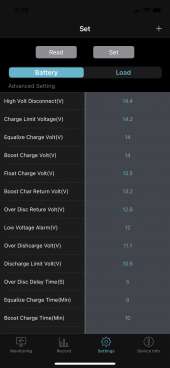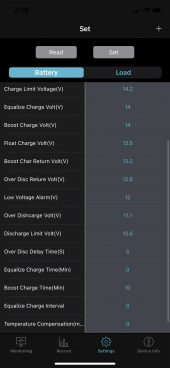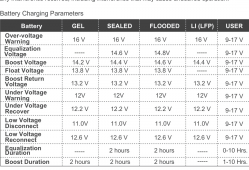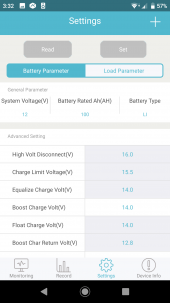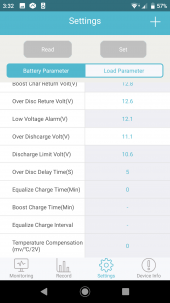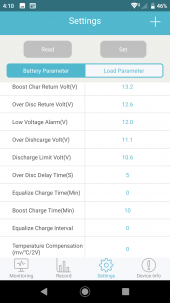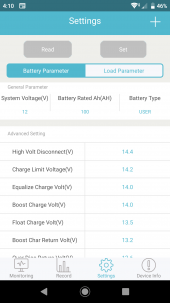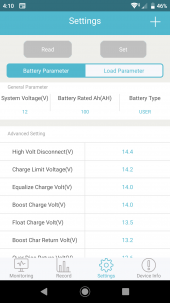Bob142
Build more, learn more.
As @MisterSandals pointed out, the Equalization voltage matters less than setting the time to zero so that it doesn't equalize. I set it to 14V as a hedge against the SCC doing something unexpected and not adhering to the zero time setting.Could really use your advice on the equalization settings. Are my assumptions and settings right?
Equalization 14v
Boost 14v
Float 13.6v
Half-empty batt=undervoltage: 13.2v
Empty batt=low voltage disconnect 12.3v
I will keep load off and add panels when I can but any advice appreciated.
I use the BT-1 Bluetooth module and the Renogy app to set mine up. I've never tried to get to all of the settings via the front panel of the unit so I'm not sure if they are all available (I can check that out a little later this afternoon). I've also noticed that terminology between the manual snippet, what you see on the front panel, and what I see in the app are inconsistent. So this might take a few tries for us.
Here's what I have for settings via the app:
